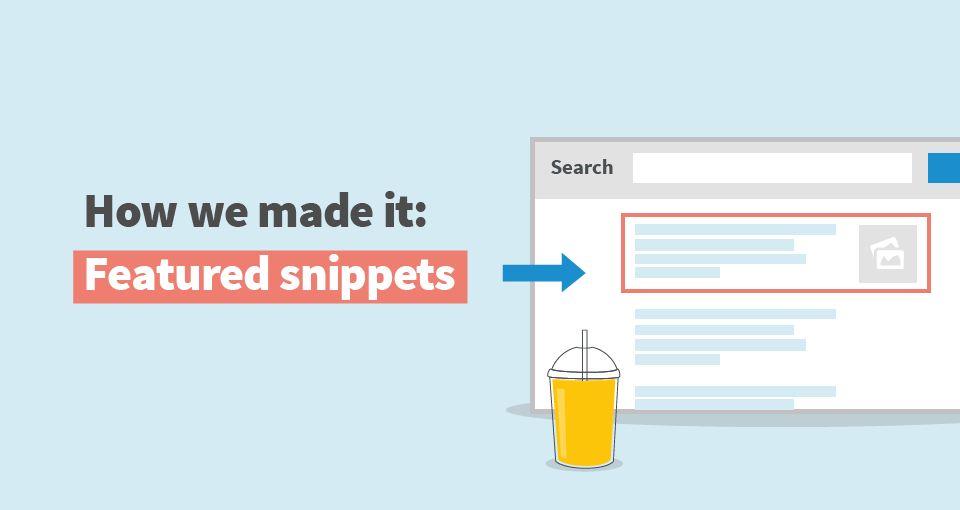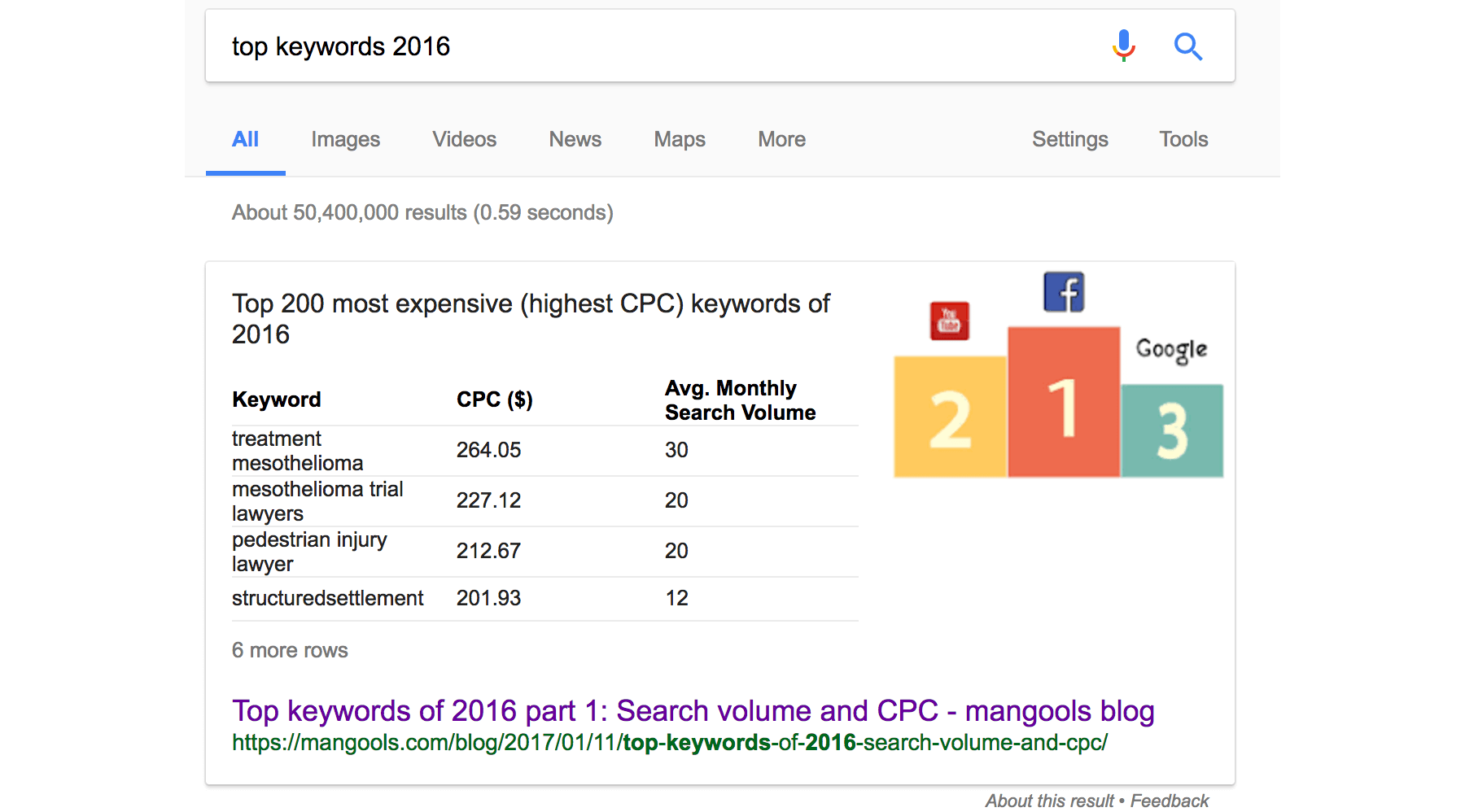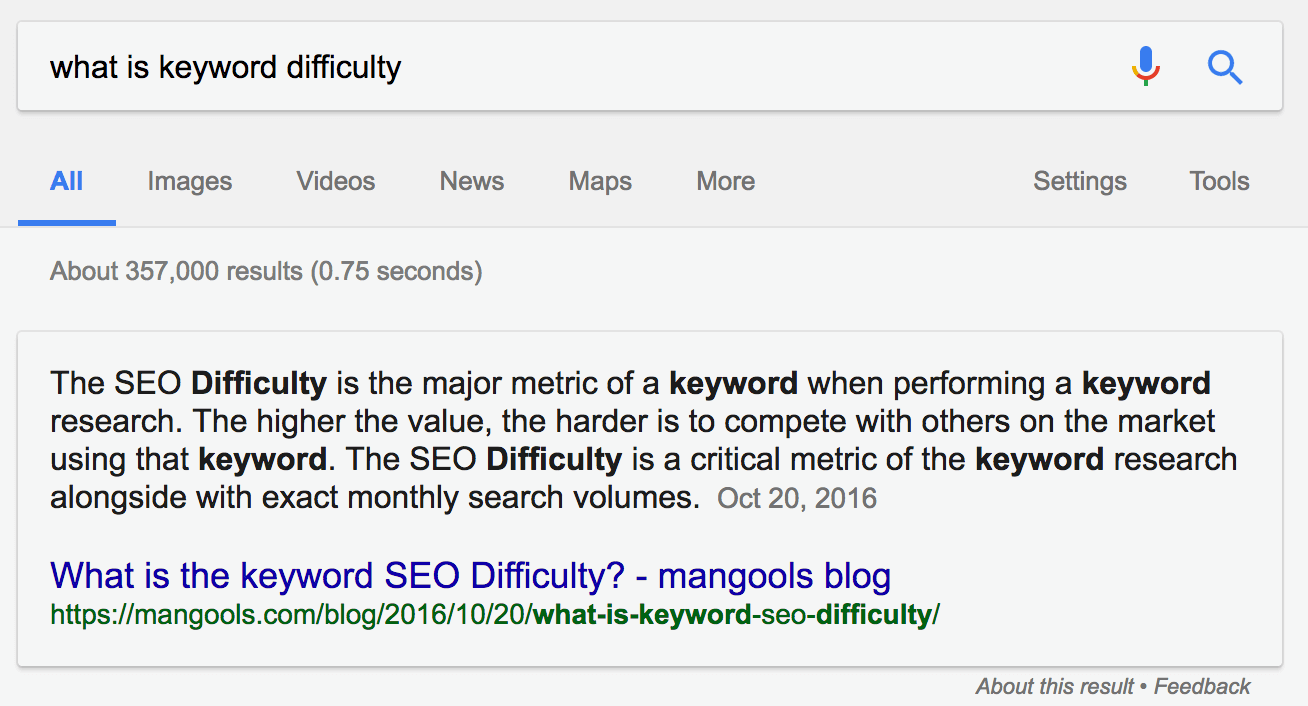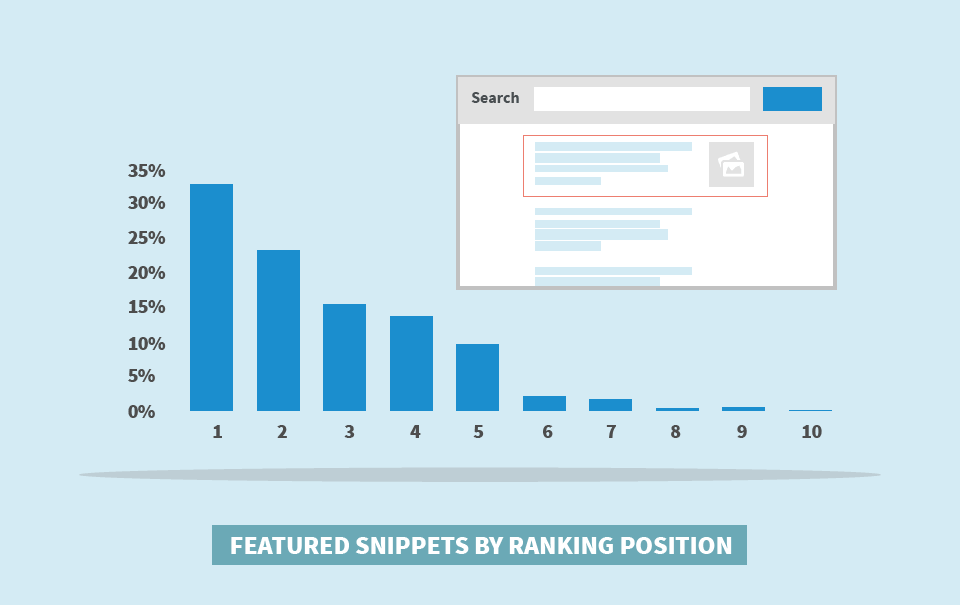Two of our blog posts recently made it to Google featured snippets. The funny part is we didn’t write them with such intentions. Of course, it’s superb when the content we produce is in the snippets.
Anyhow, it was a surprise so we immediately started inspecting what’s hiding behind the curtain. We’ve discovered a lot of information and thought you might find it interesting.
What are the featured snippets?
The featured snippet is a piece of information displayed at the top of search results. It’s a block of text with a summary of the answer taken from a website. It includes a title and URL of the website.
Google programmatically selects the website by detecting whether it contains possibly the best answer to a question.
That being said, featured snippets are answers to informational search queries.
Quick tip:
Learn more about types of search queries and in our Ultimate SEO guide for beginners or find out how search engines work.
Some say featured snippets steal clicks. It kind of makes sense. Their point is to provide enough information without clicking. In our case, they boosted CTR significantly.
If you are about to optimize your CTR, make sure to read a couple of useful tips in our SEOpedia’s CTR guide.
Case study
Let’s take a look at two our blog posts, which made it to Google featured snippets.
It’s a bit tricky if featured snippets are profitable or not. Our case study proves they can be.
Blog post #1
The Top keywords of 2016 was featured in a table snippet on a search query “top keywords 2016”.
Besides carefully structuring the data and choosing keywords, we have one more advantage. The content is unique and perfectly timed. We gathered one-year data from KWFinder’s database and published the lists in the first half of January.
What was the impact on organic traffic?
We immediately spotted increased organic traffic from Google. This post is so far our best-performing in terms of organic traffic (not taking “KWFinder guide” into account).
When you look at the Google Analytics report below, you can see the organic traffic of the post is twice as much than others. So yes, featured snippets definitely boosted our traffic and CTR.
Is it possible to get there with low authority domains?
Absolutely! Let’s analyze the SERP of “top keywords 2016”. The snippet represents #1 position, otherwise, we rank on #3 for this keyword. Take a look at the report below.
We managed to outrank authorities such as Search Engine Watch or WordStream while reaching slightly above 10 Domain Authority and having 0 backlinks and almost no social shares!
Blog post #2
We got lucky again when Google determined our blog post about the keyword difficulty represents an ideal answer to search query “What is keyword difficulty”. This paragraph snippet covers the keyword difficulty definition. We originally wrote it to explain what’s the metric about and how we calculate it. It’s basically a very detailed interpretation for KWFinder users.
Analogically, the Moz metrics and the number of social shares is wafer-thin compared to articles published by Moz or Ahrefs.
What have we learned?
We formulated the outcome of our analysis into the 10 best practices:
1. We don’t need to rank first to be featured in a snippet. However, being on the first page is a must. Guys from Moz analyzed the results and found out that the most results featured in snippets ranked from #1 to #5.
2. We need specific content that directly responds to a search query.
3. Is it possible to boost CTR of featured snippets? Yes, it is. Formulate the copy in a way it serves as a teaser for more interesting stuff so it motivates users to click. Ben Goodsell explains in a case study how featured snippets led to a 516% increase in sessions and CTR jumped from 2% to 8%.
4. Page Authority and Domain Authority don’t need to reach high values. The same applies to the number of visitors, backlinks or social shares.
5. Well-structured content is a must. It should answer questions. On the other hand, it turned out that using questions isn’t mandatory. We haven’t used a one that would match with the search query “top keywords 2016”.
6. Skipping keyword research would be a suicide. We recommend playing with questions such as What is, How to, How do.
7. We optimized both mentioned blog posts in the best way possible. Even if you don’t make it to snippets, you’ll boost your rankings.
8. There’s no special mark-up for featured snippets. Google algorithm decides which website is most likely to answer the question.
9. If you don’t want your content in featured snippets, you can opt out by using <meta name=”googlebot” content=”nosnippet”>.
10. Featured snippets are great for users. The ideal scenario is a snippet that covers all information, so they don’t have to click on any of the results. But it’s probably not a very good idea from content creator’s perspective.












